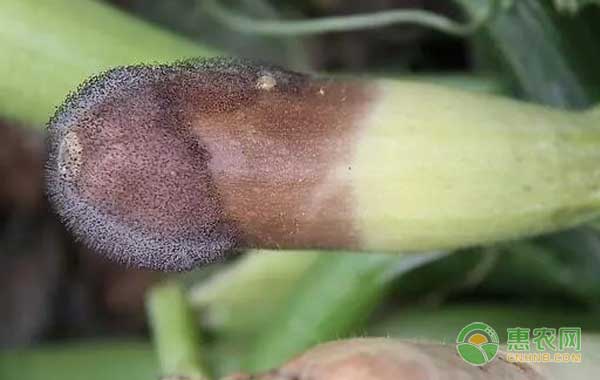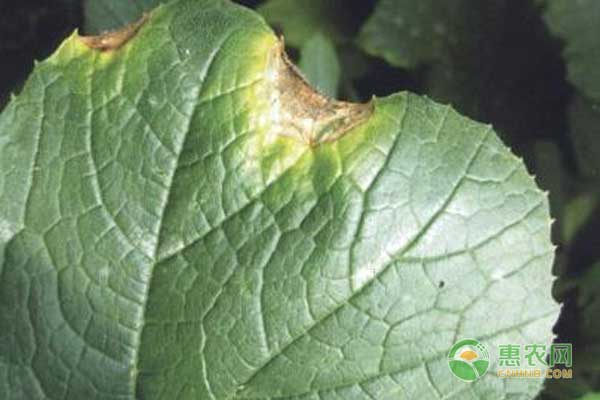In the process of planting zucchini, it is often attacked by various bacterial viruses and insect pests. Among them, gray mold is one of the more important diseases of greenhouse squash. The gray mold is widely distributed and harmful. The following is the case of gray squash. Symptoms and prevention methods.
Gray mold is common in northern protected areas and southern protected areas and open fields. The rate of general melons is 8% to 25%. When the incidence is serious, it can reach more than 80% and even ruin. It is mainly harmful to young melons, but also to flowers, leaves and vines.

1, the symptoms of the disease
1 fruit onset
The pathogen begins to invade from the wilted female flower, gradually softens and rots and grows a gray-brown mold layer. The diseased part gradually develops toward the young fruit, and the top of the infected melon strip is chlorotic at the beginning, followed by water-stained soft rot and atrophy. A dense layer of gray green mold, that is, conidiophores and conidia of gray mold. Sometimes black sclerotia grows. If the diseased tissue falls on the leaves or stems, it will cause stems or leaves to develop.
2 leaf disease
The lesions are irregular, and most of them invade from the leaf margin. The lesions are mostly "V"-shaped spots, some of which are round and large, with a brown wheel in the center, and a gray mold layer when the humidity is high.
3 stem morbidity
Gray-white lesions appear, which can cause stems to break after one week. The symptoms of the gray mold of the zucchini are similar to those of the melon under the wet condition, and need to be added separately.
2, the pathogen
The pathogen is Botrytis cinerea, which belongs to the subfamily Fungus. The sexual generation is Sclerotinia sclerotiorum, belonging to the ascomycete subphylum. The spore stalks of the pathogens are clustered, brown, with 1-2 branches at the top, densely stalked at the top of the branches, and a large number of conidia on the stalk. Conidia round to elliptical, unitary, nearly colorless.

3. Pathogenesis and transmission route
The pathogen mainly overwinters in the soil and on the diseased body with sclerotia, conidia or hyphae. The conidia can survive for 4 to 5 months on the diseased body, and the conidia of wintering and summering become the initial bacterial source for protecting underground crops. The pathogens are spread by farming operations such as airflow and watering. Walking or pruning, scenting, and watering can be spread. The conidia on the leaves, flowers, and fruits of the disease can cause repeated infections. .
The hyphae can grow at 2~31°C, and the optimum temperature is 20~23°C. The pathogen must be germinated at a relative humidity of 88%~100%, and the best germination is 92%-95%. Mostly from wounds, parenchyma, especially from the broken flowers, the old leaf margins.
More rainy and cloudy days in spring, high humidity, low temperature, insufficient light, weak plant growth, 90% humidity in the shed, long duration of condensation, large fog, and unprompted production and release will cause the occurrence and prevalence of gray mold.
In general, from February to March and November, most of the cloudy days are the peak incidence.
4, comprehensive prevention
4.1 Agricultural control
Thoroughly remove the diseased leaves and debris after the squatting, strengthen management, avoid watering in rainy days, and pay attention to increase ventilation after watering and reduce air humidity. When the gray mold occurs sporadically, the infected tissue is immediately removed and taken out of the field or concentrated outside the greenhouse. Appropriate control of watering, when exposed to open field, timely drainage after rain, reduce the relative humidity in the field.
4.2 shack
When cultivated in a protected area, the temperature of the temperature and the humidity should be reduced. The time of the leaf surface of the zucchini leaves should not be as low as possible. When the disease in the shed is serious, the high temperature suffocation measures should be taken. The shed should be irrigated one day before the shed, and the shed should be closed at noon on sunny days, so that the temperature in the shed rises to 36~38 °C for 2 h, then gradually cool down and return to normal. .
4.3 Smoked
Winter spring 扣 扣 shed 20 days in advance, with sulphur smoked shed, 0.25 kg of sulfur per 100 m3, sawdust 0.5 kg, mixed and ignited for 1 night. It can also be sterilized by spreading 50% of the E. coli dry suspension agent 2 kg/667 m2 on the surface of the shed. In the early stage of the disease, the smoke agent is used for prevention and control. 667 m2 uses 10% procymidone, 200-250 g, 45% chlorothalonil 250 g, 15%, rot, 250-400 g or 3% thiabium. Lingyan agent 300 ~ 400 g and so on.
4.4 Pharmacy flower
In the flowering period, a hormone sputum flower which promotes fruit development is used in combination, and 0.1% of a 50% procymidone WP or a 50% bacteriostatic WP can be added to the prepared liquid.
4.5 Powder spraying
Spray 5% chlorothalonil dust 1 kg/667 m2 in the evening, once every 7 to 10 days.

4.6 Pharmacy spray
When the lesion is first seen or in the cloudy day, it can spray 1 million spores/g Pythium oxysporum WP 10,000 to 1,500 times liquid bio-pesticide to improve the host disease resistance.
Seedlings were sprayed with 50% iprodione wettable powder 1000 times before planting.
In the early stage of the disease, 30% F. pyromycete WP 800 to 1 200 times solution, 50% flavonoid wettable powder 500 times solution, 50% cyprodinil water dispersion granule 800 to 1 000 times solution, 500 g/L fluazinam suspension 1 500~2 000 times, 50% Fu·isobacter WP 800~1 000 times, 75% 肟 bacteria· Tebuconazole water dispersible granules 3 000 times, 50 % Do·Fu·B wettable powder 800~1 500 times liquid or 28% hundred·Mu Weiwei wettable powder 800~1 000 times liquid spray.
It can also be controlled by a formula spray. Such as 65% methyl sulfide, mildew WP 1500 ~ 1500 times liquid + 75% chlorothalonil WP 600 ~ 800 times solution, 45% thiabendazole suspension 800 ~ 1 000 times liquid + 70% generation Senn Manganese Zn Wettable Powder 800~1 000 times liquid, 50% Isocarburon Wettable Powder 800~1 000 times liquid+70% Daisen joint dry suspension agent 800~1 000 times liquid, 2% Wuyinmycin liquid 150 ~ 300 times liquid + 75% chlorothalonil wettable powder 600 ~ 800 times liquid, 200 million live spores / g Trichoderma wettable powder 600 ~ 800 times liquid + 70% mancozeb WP 800 ~ 1 000 times liquid, 50% nicotinamide water dispersible granules 1,500 to 2,500 times liquid + 75% chlorothalonil WP 600 to 800 times liquid, 50% cyprodinil water dispersible granules 1 000 to 1,500 times Liquid +70% Daisen joint dry suspension 700 times solution, 25% pyridine oxazole cream 1 000~2 000 times liquid + 70% mancozeb wettable powder 800 times liquid, 2% propane water repellent 1 000 ~ 1 500 times liquid + 50% captan WP 1600-800 times solution, 50% Pythium WP 1500 ~ 1500 times liquid + 50% carbendame WP 600-800 times solution, 40% pyrimethanil suspension 1 000 ~ 1500 times liquid + 50% captan WP 1600 ~ 800 times liquid spray protection Focus on spraying flowers and melons.
The above is the control method of squash gray mold, I hope to help you, want to know more about agricultural technology, please pay attention to Hui Nong School!
The best choice for Analog hearing aids with earbuds design
TWS Hearing aids,TWS Hearing amplifier,TWS Hearing Earbuds
Shenzhen Sunshine Technology Co.,Ltd , https://www.yatwinsz.com